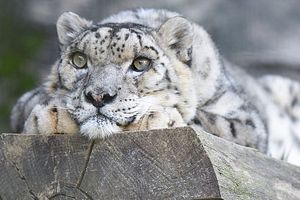There’s something especially sad about a solitary animal dwindling into extinction. Will the last snow leopard know it’s the last? There have been various efforts across the 12 countries which make up the snow leopard’s remaining habitat — Afghanistan, Bhutan, China, India, Kazakhstan, Kyrgyzstan, Mongolia, Nepal, Pakistan, Russia, Tajikistan and Uzbekistan — to save the endangered cat. How many snow leopards remain in the wild is unknown, though most estimates range between 4,000 and 6,000. A firm number is as elusive as a lone white cat in the mountains.
A recent report from TRAFFIC, a wildlife trade monitoring network established as a joint program between the World Wide Fund for Nature (WWF) and the World Conservation Union (IUCN), revisits the case of the snow leopard, examining patterns over the last 13 years since the program first studied snow leopard poaching and trafficking (referred to in the report as snow leopard crime.)
The report is based on two data sets. One comes from a database of government seizure records and observations. To account for the fact that countries which have made greater efforts to observe and deal with poaching may skew that data set, the study also builds on a survey of 42 experts across the 12 range countries. The survey asked experts to detail “total number of known cases, case outcomes, and reasons for killing Snow Leopards.”
More than 90 percent of snow leopard poaching occurs in five countries: China, Mongolia, Pakistan, India and Tajikistan. This list is somewhat misleading. While China has the highest poaching estimate, it also has the largest share of the snow leopard’s territory. Afghanistan, Russia, Nepal and Pakistan all had disproportionate shares of crimes.
Based on that data, the survey estimates that between 221 and 450 snow leopards have been poached annually since 2008. Notably, experts estimate the average rate of poaching detection at less than 38 percent, meaning the true numbers are likely much higher. Based on their estimates, the experts say 55 percent of the snow leopards killed annually are in retaliation for “livestock depredation” (killing domestic animals), 21 percent are killed for trade and 18 percent killed via non-targeted means like snares.
It’s notable that more than half are killed in retaliation rather than primarily for illegal trade, but when a snow leopard is killed in retaliation or accidentally by a snare, there is more often than not a subsequent attempt to sell the animal.
This opportunism is the focus of the report’s first recommendation for governments: greater support for efforts to mitigate retaliatory killings. This can be pursued in several ways aimed at either reducing the loss of livestock, offsetting livestock losses with community insurance programs, and/or government compensation programs.
Other recommendations seek to deal with legislative and law enforcement shortcomings in range countries. The report notes that only 14 percent of poaching cases (the outcomes of which are known, at least) result in prosecution, a much greater number of cases have unknown outcomes. Further recommendations focus on continuing efforts to gather data and support conservation efforts at the community-level.
“Community-based conservation programs are probably the single most important approach to reducing retaliatory killing, poaching and trafficking,” the report notes.
For many of the range countries the snow leopard holds an important place in local culture. Its stylized image appears across the region on municipal seals (such as those of Almaty and Bishkek) and in art and mythology. There are numerous stressors confronting the snow leopard. Its territory is shrinking, and thanks to climate change likely to shrink further. The animals on which the snow leopard preys — ibex and wild sheep — are also under pressure from hunting and habitat loss.

































